( Almost ) 30 Meters Of Expired Kodak T-MAX 400 Later
Some time ago I got myself a 30.5 meter roll of expired Kodak T-MAX 400. I wasn't out there trying to find it. As all things, it was a good deal found on Ebay. Whilst I would be very wary of buying bulk rolls of expired color negative or positive films, black and white film can usually take the odd expiry. A few years or 50 won't bring it down too much. When it starts to get into higher double digit "past expiry years" then you might need to start adjusting your exposure times. Before that you can often get away with sticking with box speed.
In case you're wondering what one can do with a 30.5 meter roll of film — you roll that into the usual film canisters yourself. To do that you need to get something called a Bulk Film Loader. And you need access to complete darkness. Be it in the form of a room or a dark bag. The benefit is a cheaper price-per-roll and more flexibility. For example you can make 12 shot rolls. Or 48 shot rolls although there is a practical limit of how much film you can cram into a normal 35mm film canister. The downsides include more effort, bigger chance of scratches and non-0 chance to ruin the whole 30.5 meter roll by exposing it to light.
My giga-roll expired in 2006. Not too long ago. To my children it seems like an ancient past where dinosaurs roamed the earth. To me and the film it's a near past. Not much further away than yesterday.
This was my first experience with T-MAX 400. It's not a film I would buy on a regular day. Tabular grain film, of which T-MAX is part of, does not interest me. I like normal grain.

Benefit of buying bulk rolls is getting the cool tin packaging.
Before I go into my thoughts about T-MAX 400 I have to tell you that you shouldn't use this information as a review. My roll is expired. Although it's not like raw meat which should be avoided a few days after expiry date, it will still deteriorate over time. Deterioration rate will depend on the film storage conditions. I stored it in the freezer but I have no idea how it was stored before the film reached my sweaty hands. Read this review as a review for this particular roll and not all Kodak T-MAX 400 rolls.
Thoughts On Film
First things first. It appears that my supa-roll of T-MAX 400 has let go of some of the sensitivity that was given to it by its creator — Kodak. Shooting at box speed ( EI / ISO 400 ) produces murky-ish results. Detail is lost in shadows and only the funky grain remains. For better results I've found that rating it at EI 200 works better. It might not need a full stop more light and two thirds could be enough but I don't like decimals. I have blown some highlights rating it a full stop lower but that seems like a better compromise than losing too much from the shadows. I don't need to see the tiniest hairs in the shadows but my T-MAX 400 likes to bring out the grain in the shadows which does not look too good.
Since I touched upon grain — I dislike the grain on this film. I'm also not the biggest fan of other T-grain-like films like Ilford Delta for example. T-grain looks more uniform and I can only describe it as "fuzz". Not sure why this word exactly but here you go. Normal grain looks chunkier and...well like grain. Like sand. T-grain looks more like noise to me. I could be insane. This could be all in my head but that's how it looks to me.
Maybe I notice it more because I like to push my film. Pushing the film will increase the noticeable grain. And my T-MAX doesn't appear to like being pushed much. Things get muddy real quick. Outside the expired nature of this film, the developer could also be at fault. I use Kodak HC-110 for pretty much everything. It could be that pushing T-MAX 400 with HC-100 doesn't work as well. A T-MAX developer or some other developer formulated more for pushing could produce better results.
As I'm already dumping on T-MAX 400, let's dump some more. It seems to love living in the fixer. I use Ilford Rapid Fixer and I can clear most films in the 2 - 3 minute range. It's more like 5 minutes for T-MAX 400 to completely rid the pinkish tint. The fixer exhausts faster as well but that could be my mind playing tricks on me.
It's not all bad. I like the contrast and "tonal response" that this film provides when well developed. It's much more to my liking than the box speed Ilford HP5 but not as good as Kodak Tri-X. It also dries flat which helps in scanning.
Photo Examples

- Camera
- Leica M3
- Lens
- 7Artisans 50mm f1.1
- Film
- Kodak T-MAX 400 EI1600
- Development
- Kodak HC-110
- Scanner
- Reflecta ProScan 10T
The focus isn't great on this one but you can see how the film behaves in the darkness. Not too well if there isn't enough light. To be fair these are not the best conditions for a film but I have seen better results from other film stocks when pushed.
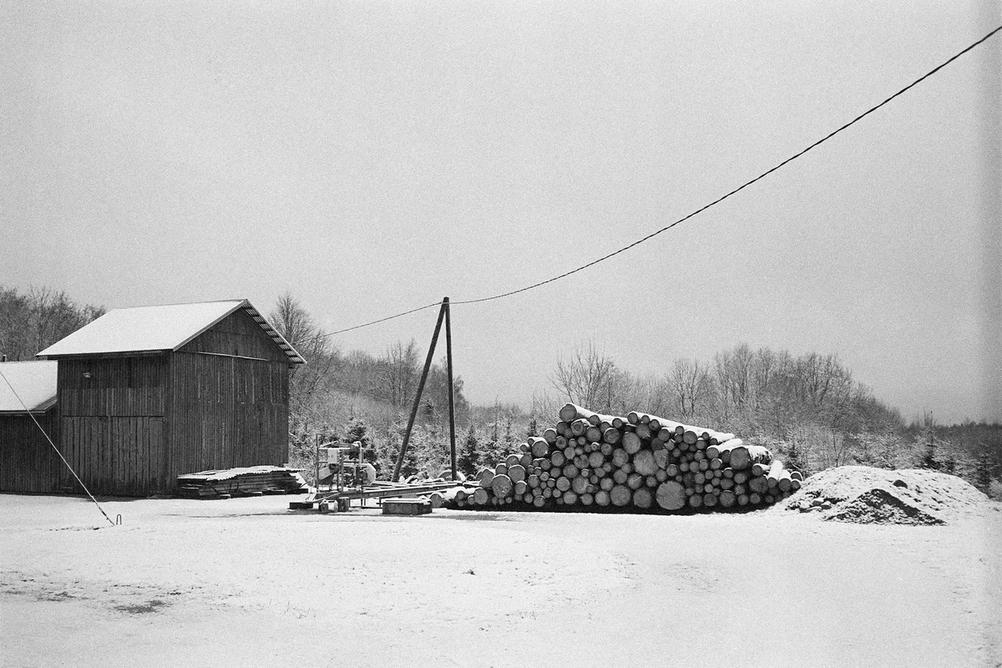
- Camera
- Leica M3
- Film
- Kodak T-MAX 400 EI1600
- Development
- Kodak HC-110; Dilution B; 7:30min
- Scanner
- Reflecta ProScan 10T
When given more light, T-MAX 400 can deliver very good results even when pushed. This to me is perfectly acceptable if not very good.
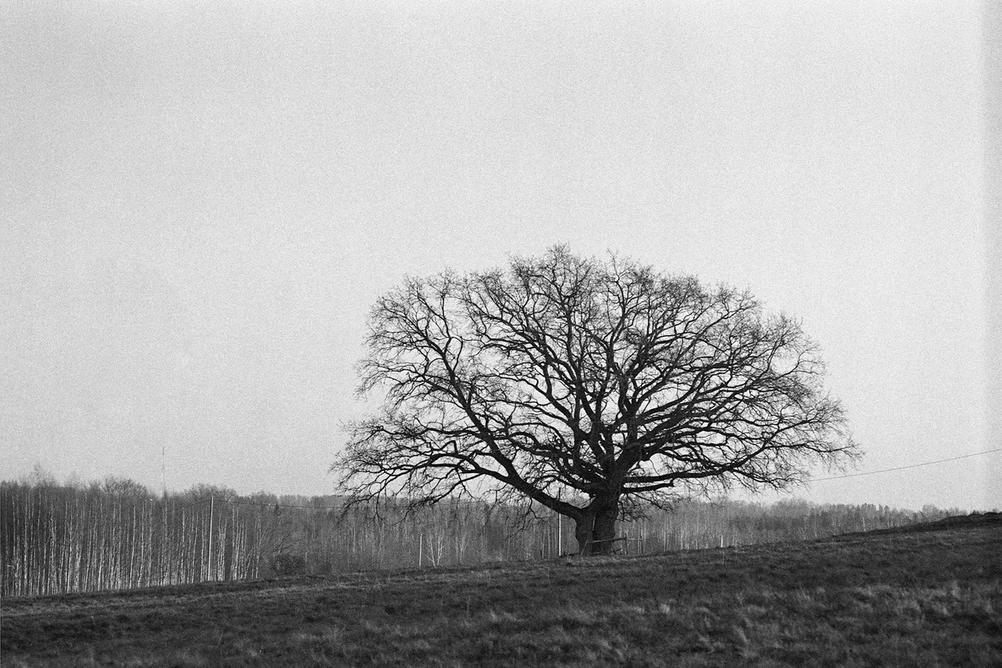
- Camera
- Leica M3
- Film
- Kodak T-MAX 400 EI1600
- Development
- Kodak HC-110; Dilution B; 7:30min
- Scanner
- Reflecta ProScan 10T
Another pushed example which has turned out very well.
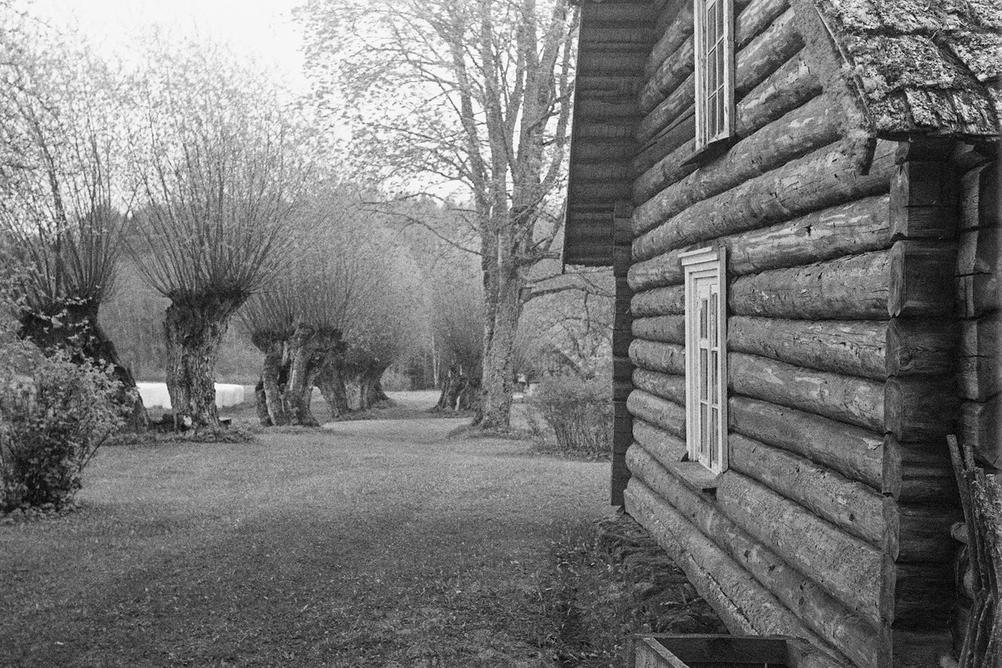
- Camera
- Leica M3
- Lens
- Leitz Summitar 50mm f2
- Film
- Kodak T-MAX 400 EI200
- Development
- Compard R09 / Rodinal; Dilution 1:100; 1 hour semi-stand
- Scanner
- Reflecta ProScan 10T
One of the best results to my eyes are when rating the film at EI 200 and using stand development. You still get some grain but there's a lot of tonality to be enjoyed and the photos appear crispier as well.
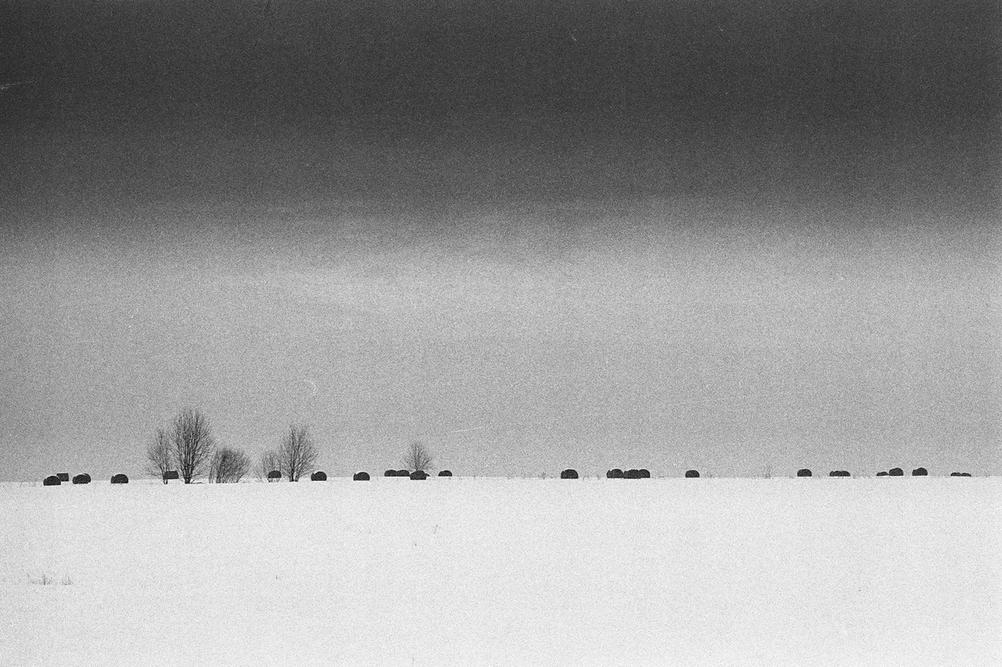
- Camera
- Canon Model 7
- Lens
- Canon LTM 135mm f3.5
- Film
- Kodak T-MAX 400 EI800
- Development
- Kodak HC-110; Dilution B; 7min
- Scanner
- Reflecta ProScan 10T
Even though the technical sheet says that you don't have to adjust the development when pushing film to EI 800 — I definitely can't do that with my expired copy. Developing for 1600 works the best but you get usable results somewhere in the middle as well.
Sometimes the noisy-grain can work as a small advantage. Or less of a disadvantage.
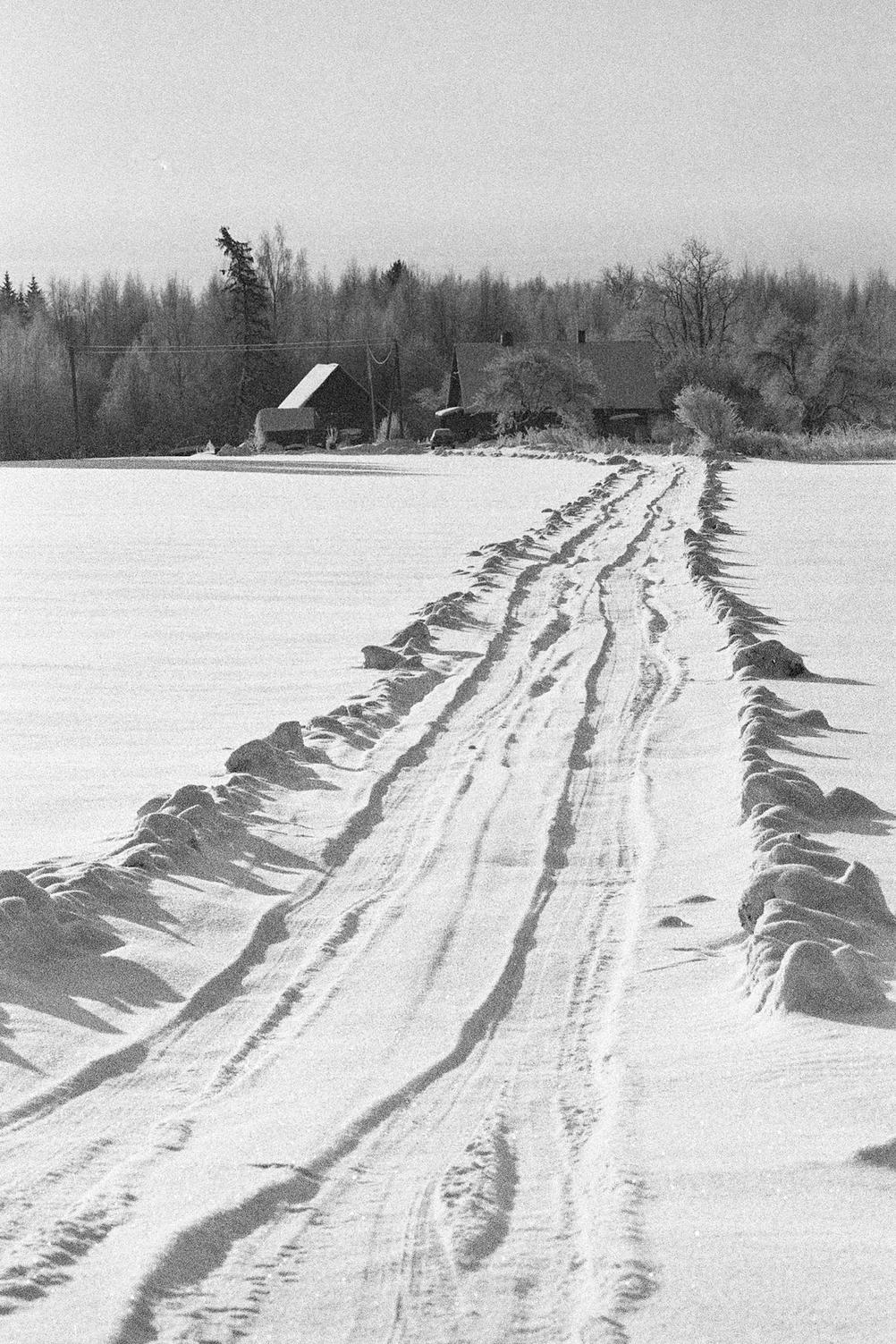
- Camera
- Canon Model 7
- Lens
- Canon LTM 135mm f3.5
- Film
- Kodak T-MAX 400 EI800
- Development
- Kodak HC-110; Dilution B; 7min
- Scanner
- Reflecta ProScan 10T
The grain is ever-present although giving the photo more light definitely tames it. Having less near-black areas helps as well.
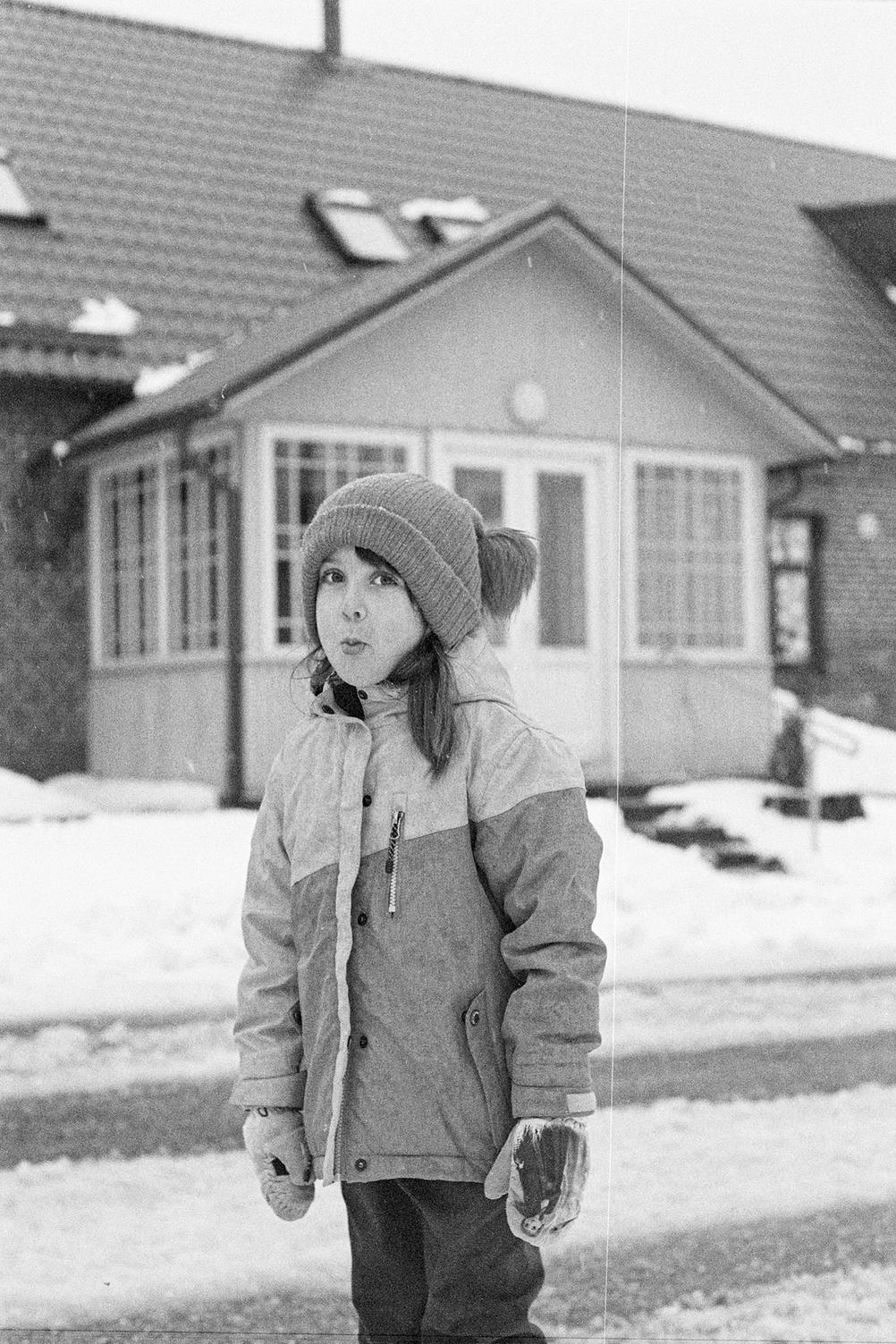
- Camera
- Pentax MV1
- Lens
- Pentax SMC M 50mm f1.7
- Film
- Kodak T-MAX 400 EI400
- Development
- Kodak HC-110; Dilution B; 6:30min
- Scanner
- Reflecta ProScan 10T
I can get good results when rating the film at box speed as well. Although I did tell the meter to over-expose by a stop or so because of the snow.
You can also see one of the disadvantages of bulk rolling. Most of the roll has this line going across the whole negative. Probably caused by a small debris stuck somewhere in the film canister.
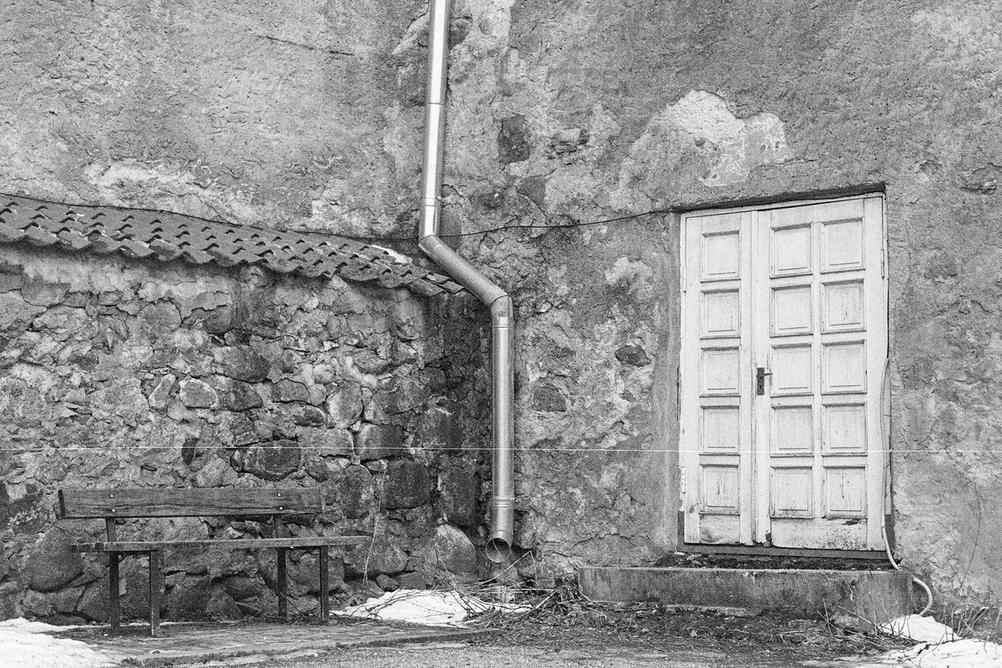
- Camera
- Pentax MV1
- Lens
- Pentax SMC M 50mm f1.7
- Film
- Kodak T-MAX 400 EI400
- Development
- Kodak HC-110; Dilution B; 6:30min
- Scanner
- Reflecta ProScan 10T
Another example of how a sharp lens delivers sharp results on expired film. It has a hint of that noisy-grain and the stupid line scratch but otherwise it's nice.

- Camera
- Voigtländer Bessa I
- Lens
- Voigtländer Color-Skopar 105mm f3.5
- Film
- Kodak T-MAX 400 EI1600
- Development
- Kodak HC-110; Dilution B; 7:30min
- Scanner
- Epson V600
I've also used this film in my "Bessapan" where 135 film is used in 6x9 camera to deliver XPan-like aspect ratio.
My expired film greatly benefits from having a larger image area. Grain is less noticeable and you also get a boost in tonality.

- Camera
- Leica M3
- Lens
- 7Artisans 35mm f2
- Film
- Kodak T-MAX 400 EI1600
- Development
- Kodak HC-110; Dilution B; 9:30min
- Scanner
- Reflecta ProScan 10T
What I've found doing often is rating the film at one speed and then developing for an extra stop more. Here I rated it at EI 1600 but developed for EI 3200. Blacks have less grain that way and there is also less mud.
Final Words
It may read as if I'm not the biggest fan of Kodak T-MAX 400. And that would be correct. For the most part. It's by no means terrible. I'm glad I got it and I'm glad I still have a few rolls in the freezer. But it's not a film that I would want to buy regularly. There are plenty of black and white films and a single person doesn't have to like all of them. I might get a fresh roll though just to see whether all my issues are because of the age. I have doubts that all issues are because of age though.
